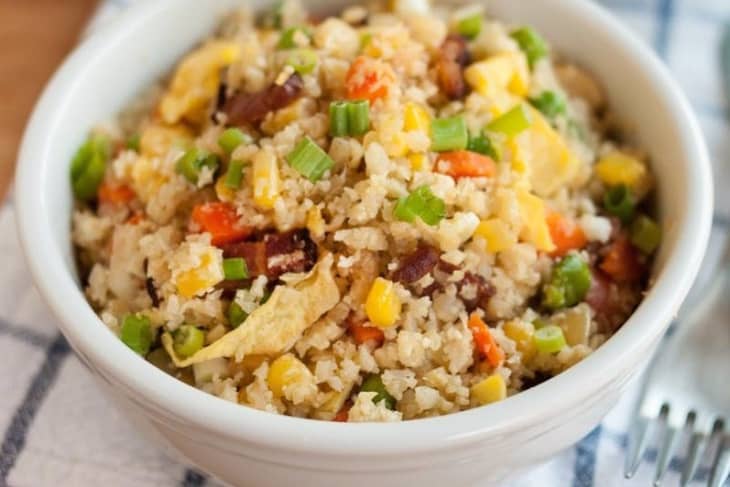Mistakes to Avoid When Substituting Cauliflower for Rice in Any Dish
If you’re about to make the swap of cauliflower rice for real rice for the first time, I want to be honest about one thing: riced cauliflower is not going to fool you as a stand-in for grains of actual rice. (Just like cauliflower pizza crust isn’t going to
fool you into thinking
But cauliflower’s lightness and fresh flavor are pretty incredible on their own merits, and when it’s shredded or processed so the florets and stems are broken down into firm “grains,” you can use them much like you would rice. They’ve proven themselves to be a super-versatile, grain-free substitute when you want a vegetable alternative to rice.
Despite the difference in flavor, riced cauliflower can do just about everything your favorite variety of rice can do — just as long as you avoid these missteps along the way.
1. Simmering it in water, like rice.
Put that pot of boiling water away. While cauliflower is a great stand-in for rice, these “grains” don’t actually need to be cooked in water like rice. Simmering riced cauliflower will leave it soft and mushy, without the toothsome texture that makes it such a good replacement.
Follow this tip: If you’re using riced cauliflower in salads and as a soup mix-in, there’s no need to cook it first. When it’s being used as a side, in a pilaf, or as the base for a veggie bowl, riced cauliflower can benefit from a quick sauté. A few minutes over the heat will allow it to soften just enough, without totally losing the firm bite.
2. Sautéing for too long.
Riced cauliflower can benefit from a quick sauté, but be mindful of the clock. Leave riced cauliflower on the heat too long and it will become soft and soggy.
Follow this tip: Quickly cooked in a little butter or olive oil on the stovetop, riced cauliflower becomes softer and more tender. As a rule of thumb, about three minutes over medium heat and not too oil much should do the trick.
3. Cooking a week’s worth of cauliflower rice at once.
While your Sunday meal prep might include making a pot of rice to last all week, that approach doesn’t quite work with riced cauliflower. Cauliflower rice usually softens after a few days in the fridge, but before that happens it really starts to smell. This strong smell isn’t an indication of spoilage, although it is very potent and will quickly work its way through the fridge.
Follow this tip: Cauliflower rice is best when it’s used the day it’s made; that’s when the grains will be most firm and rice-like. At most, make it no more than a day or two ahead of time.
4. Expecting a bland, neutral taste just like rice.
Even though riced cauliflower can act as a stand-in for rice, you might be a little disappointed if you take a bite with the expectation of it having the same neutral flavor.
Follow this tip: Substituting riced cauliflower for actual rice (and enjoying it) requires you to appropriately set your expectations. While cauliflower is a mild-tasting, versatile vegetable, it doesn’t have the same neutral flavor you get with rice. Instead riced cauliflower is mild, with nutty, slightly bitter undertones.
5. Using too much sauce or dressing.
Unlike those starchy grains of rice, riced cauliflower doesn’t soak up moisture or liquid in the same way. Top your dish with too much sauce or dressing and it will pool in the bottom of the dish.
